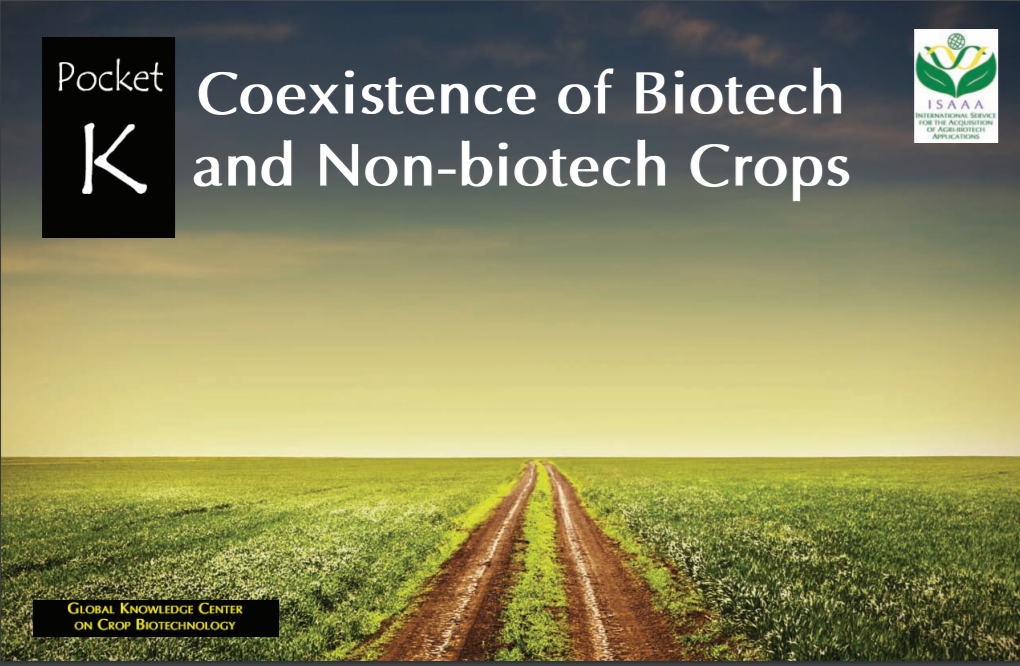
Continuous Adoption of GE Crops Confirms Coexistence is Attainable
April 8, 2020| |
The world accommodates nearly 7.8 billion people in 2020. By 2050, world population is expected to reach 9.8 billion. With the exponentially growing population, decreasing resources, and intensifying climate change, it is compelling to adopt various production systems to attain food security. Thus, coexistence of different production systems has become a viable option for some countries.
The US Department of Agriculture has defined coexistence as simultaneous planting of conventional, organic, identity preserved, and genetically engineered (GE) or biotech crops in contiguous locations, in line with consumer preferences and farmer choices. Conventional crops are produced from non-GE crop varieties and do not follow the standards for cultivation of organic produce. Organic crops are planted based on national organic regulations. Identity preserved (IP) crops have assured quality that is the same with the breeding stock. GE crops are produced using seeds developed through modern biotechnology techniques. Thus, coexistence gives the farmers the freedom to choose the best production system and get the most value out of these choices.
GE crops have been planted since 1996 and by 2018, there were already 191.7 million hectares planted in 26 countries. Continuous cultivation of GE crops in these countries together with non-GE crops confirms that coexistence is achievable.
Read more about Coexistence of Biotech and Non-biotech Crops from the ISAAA Pocket K No. 51. You may also read about the Documented Benefits of GM Crops from the updated Pocket K No. 5.
| |
You might also like:
- Poland Considers New Law for Cultivation of GM Crops
- USDA Secretary Vilsack Challenges Seed Industry
- Attitudes of European Farmers Towards GM Crop Adoption
Biotech Updates is a weekly newsletter of ISAAA, a not-for-profit organization. It is distributed for free to over 22,000 subscribers worldwide to inform them about the key developments in biosciences, especially in biotechnology. Your support will help us in our mission to feed the world with knowledge. You can help by donating as little as $10.
-
See more articles:
-
News from Around the World
- Continuous Adoption of GE Crops Confirms Coexistence is Attainable
- Science Media Centre Malaysia Launched
- Indian Experts Develop Nutritious Drought Tolerant Chickpea
- Rothamsted Research Study Shows White Flour is Healthiest It's Been in 200 Years
-
Research Highlights
- Study Identifies New Mechanism for Temperature Sensing in Plants
-
Plant
- CRISPR-Cas9 Used to Transform Normal Maize to Waxy Version
- Scientists Determine Successful, Cost-Efficient Biofuel Production
- Gene Editing of Three BnITPK Genes in Oilseed Rape Reduces Phytic Acid in Seeds
-
Health
- Researchers Turn to Cell-free Biotechnology to Accelerate COVID-19 Therapeutics
- Native Australian Plant Paves Way for Vaccine Development Against COVID-19
-
Read the latest: - Biotech Updates (December 17, 2025)
- Gene Editing Supplement (December 17, 2025)
- Gene Drive Supplement (February 22, 2023)
-
Subscribe to BU: - Share
- Tweet

